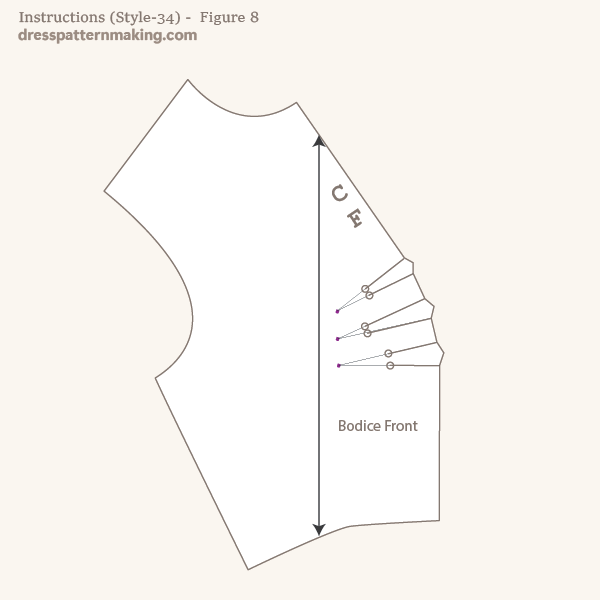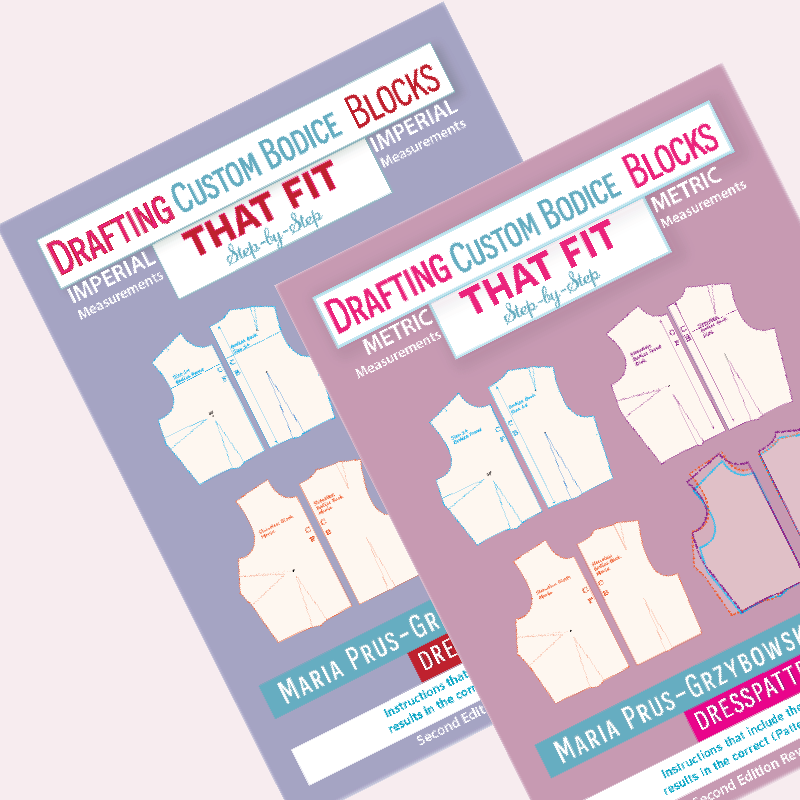Bodice Front Style 34
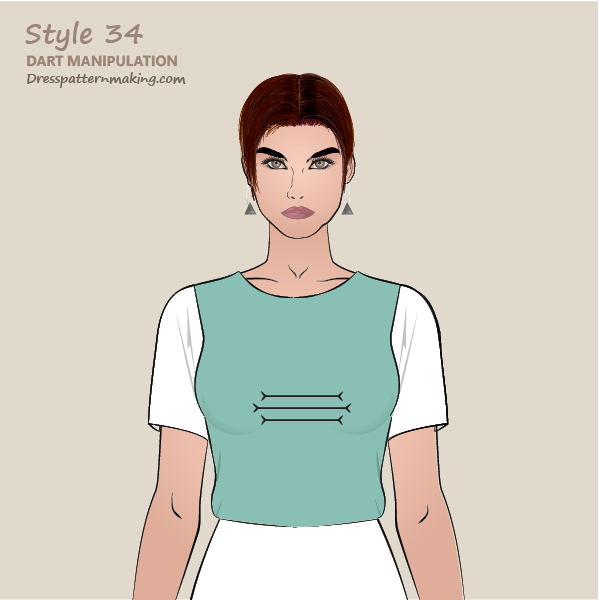
The bodice of this garment has three parallel pleats in the Center Front. The middle pleat is longer than the other two; the other two outer pleats are the same length.
Example: Outcome
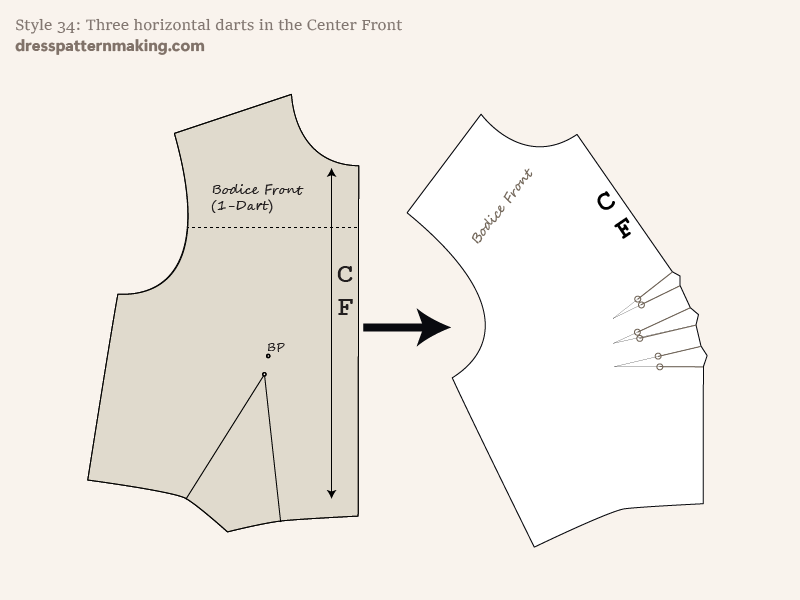
Figure B shows the block being used on the left (1-Dart Block), and the pattern that will be created (Style 34) on the right.
The focus of these instructions is covering the theory and practice of manipulating darts and the exercise finishes after the dart manipulation has been done. For production ready patterns you would need to take further steps to add seam allowance, pattern labels, pattern piece numbers, the grainline, etc.
Instructions (Style-34) - Figure 1
Note that in the instructions, color is used for emphasis, so it can be seen more easily, particularly in the current step. You will be using a hard (4H-6H pencil). Note that while the actual garment has pleats, which is a dart equivalent, the instructions will talk about creating darts. Dart Equivalents require that darts be created first. In this exercise, we will not be pivoting on different points. This is because we are creating parallel darts (or actually dart equivalents), and by it's very nature, the three parallel darts cannot be pointing towards the same point. See the page on Complex Dart Manipulation if you have not already done so (if you click on the link, it will open in a new window).
- Draw a circle with a radius of 1 inch (2.54 cm),with the Bust Point as the center. This means the diameter of the circle will be 2-inches.
- Draw a line from one side of the circle (Pivot Point 1, where the arrow tip touches the pink circle) to the CF.
- Draw a parallel line to the first line, from the other side of the circle (Pivot Point #2, where the pink arrow tip touches the pink circle) to the CF.
- Draw a third parallel line in the center, running from the Bust Point to the CF.
Since the darts are parallel, the distance between the three dart lines are the same at both sides of the dart line.
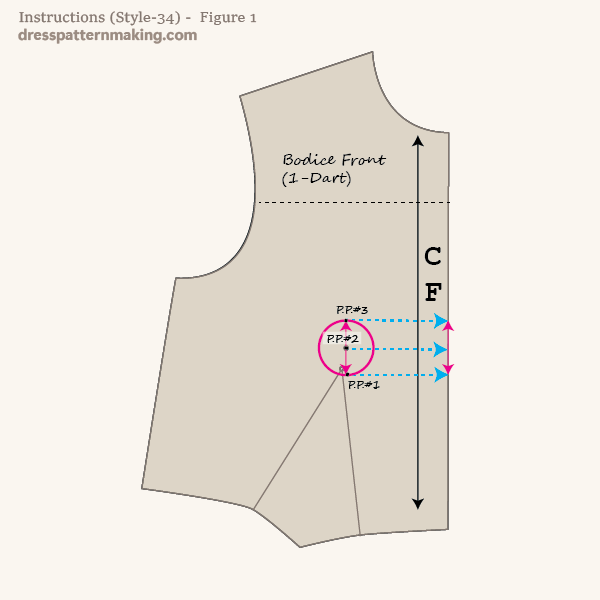
Instructions (Style-34) - Figure 2
- Measure the waist dart width from A to D.
- Divide this number by three and mark these third-points (in the image they are marked with black stars).
- Draw lines from the Bust Point (also marked PP2) through these marks to the edge of the block (i.e. to points B and point C).
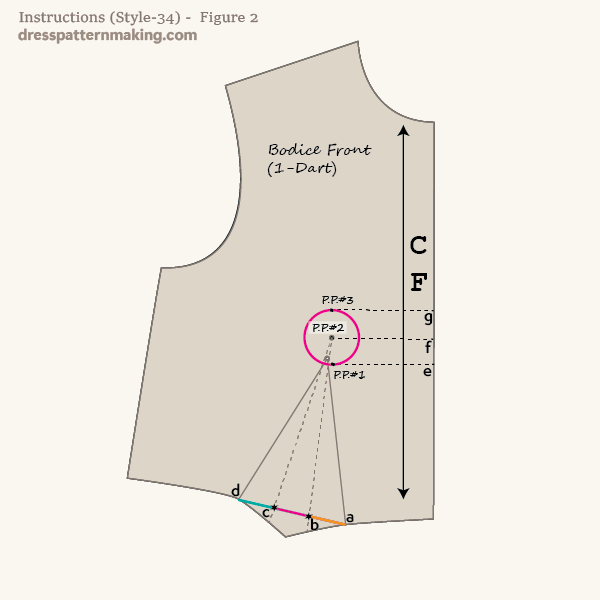
Instructions (Style-34) - Figure 3
- Extend dart leg A out onto the paper for some distance (as indicated by the red arrow).
- Trace the block in an anti-clockwise direction, from waist dart A to design line point E.
- Mark the three pivot points on the paper underneath by piercing holes through the cardboard with an awl (do this before you start pivoting).
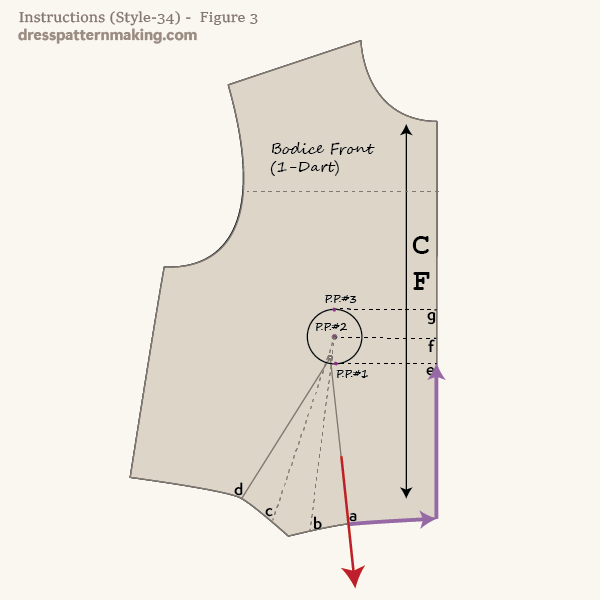
Instructions (Style-34) - Figure 4
- Hold down the block at Pivot Point #1, and turn the block in an anti-clockwise direction to close one-third of the waist dart. I.e. turn it until point B reaches the red arrow.
- Trace the block from point E to F (in-between first and second parallel dart lines).
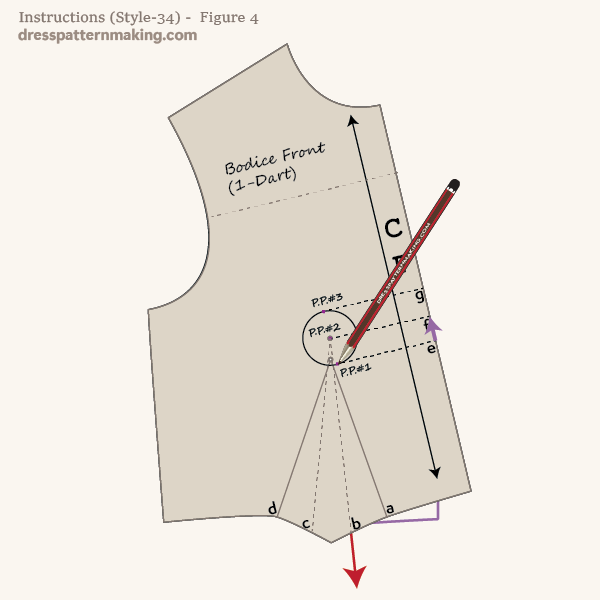
Instructions (Style-34) - Figure 5
- Holding the block at Pivot Point #2 this time, pivot the second third of the waist dart closed; i.e. until point C reaches the red arrow.
- Trace the block from point F to point G (between the second and third parallel dart legs).
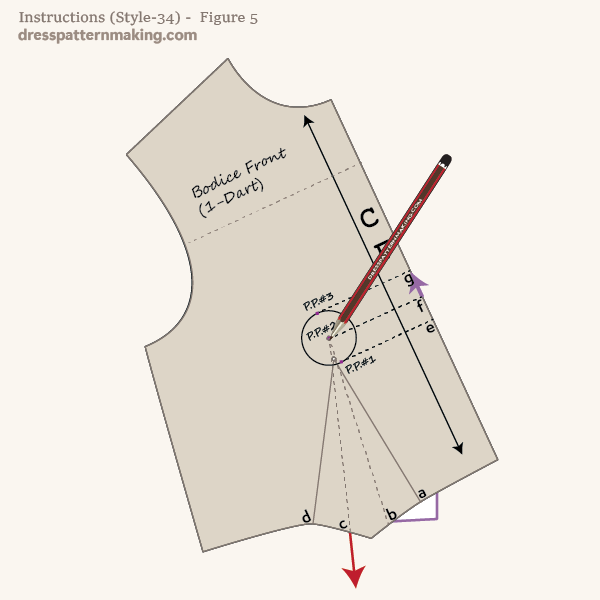
Instructions (Style-34) - Figure 6
- Holding the block at Pivot Point #3 this time, pivot the remainder of the waist dart closed; i.e. until point D reaches the red arrow.
- Finish tracing the block from point G to D.
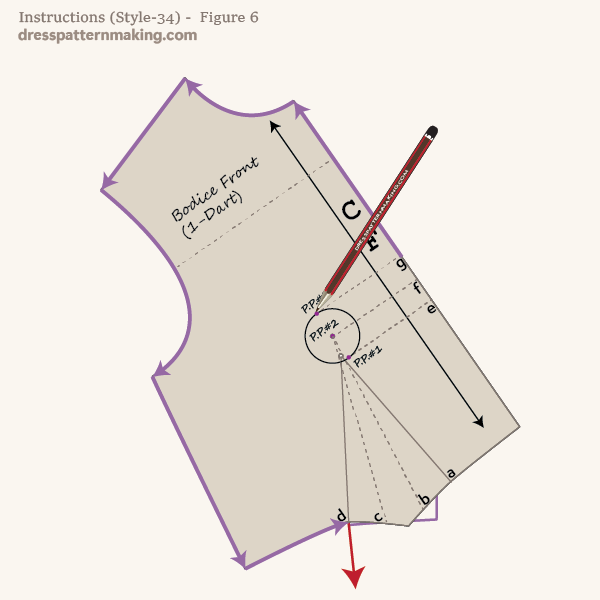
Instructions (Style-34) - Figure 7
You can lift up the block and put it aside.
- Draw the dart legs to PP1, PP2 (the Bust Point), and PP3.
- The waist line may need a little adjustment; true if necessary.
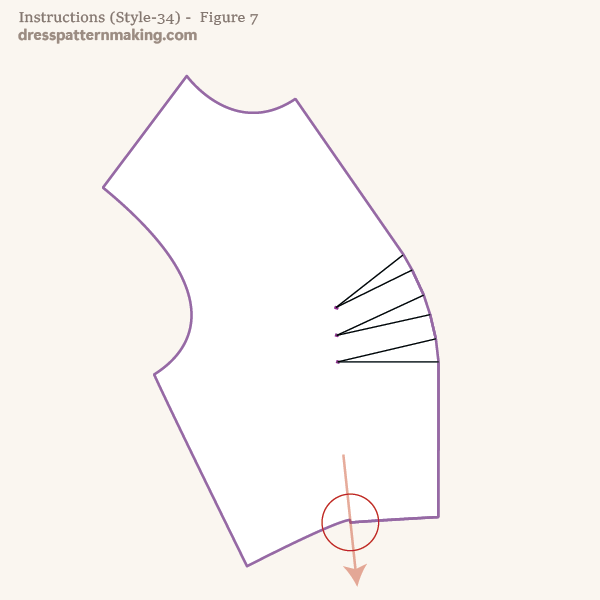
Instructions (Style-34) - Figure 8
- The pattern has pleats instead of darts, so mark accordingly. According to the flat, the middle pleat line is longer.
- Of course, if this was a pattern, you would need to add seam allowance, cutting instructions, grainline, label the pattern piece, etc.
